By Francis Haden
Kalymnos, the Greek climbing mecca…
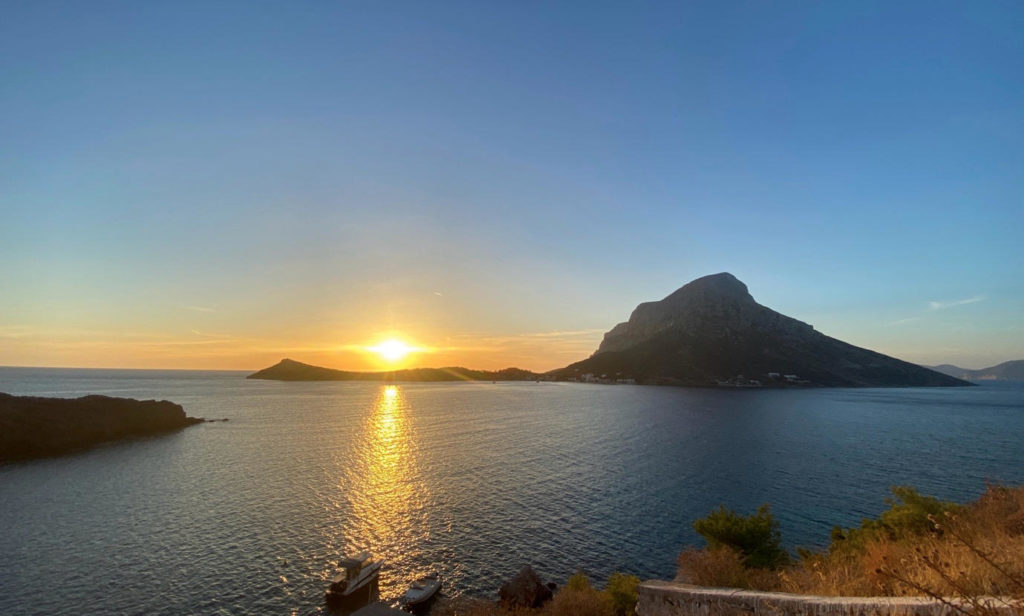
Another Kalymnos bolting trip and my return to the South Face of Telendos, which has always held an
appeal for developing new routes.
Whereas many developers seek single-pitch, preferably easy-to-access-from-the-road crags, the logistical challenges of traveling halfway around the world with 77kg of luggage to establish 200m big-wall new routes invariably means there’s more choice when it comes to finding a new route.
The elevated wall dripping with tufas on a separate buttress of rock left of PROMETHEUS had long caught my attention from previous trips equipping sub-sector Titan Towers and the multi-pitch PROMETHEUS. After six years, this year presented the opportunity to realise my curiosity.
The logistical aspects of establishing new routes more than 200m high in locations such as the South Face of Telendos dissuade only but the very motivated non-resident developers. The island consequently continues to provide bolting opportunities for those sufficiently driven to realise new lines.
Yes, it would be easier to use expansion bolts, but glue-in anchors (bolts) will ensure that no climber will be posting about a missing hanger on pitch nine sometime in the future and can someone bring a spanner and can someone…you get the idea. Bringing in a little over 3.5 litres of epoxy adhesive is always fraught with concern that cartridges will be damaged—or worse, baggage fails to arrive. Hardly as if it can be taken onboard as carry-on luggage.
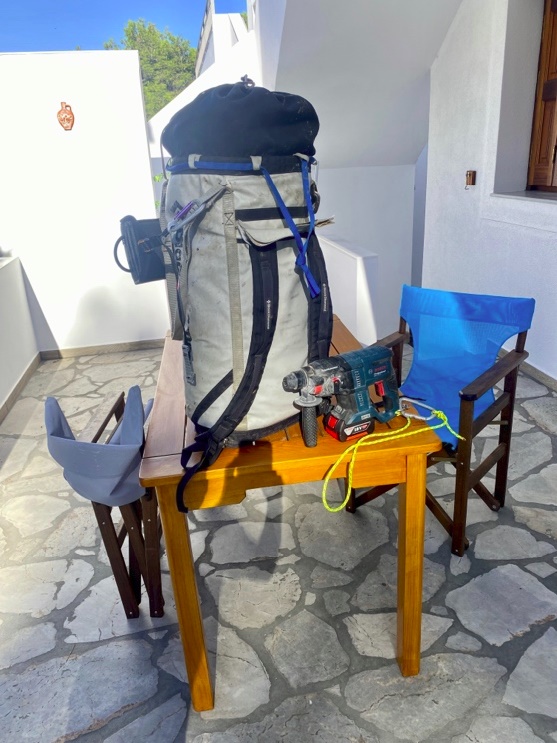
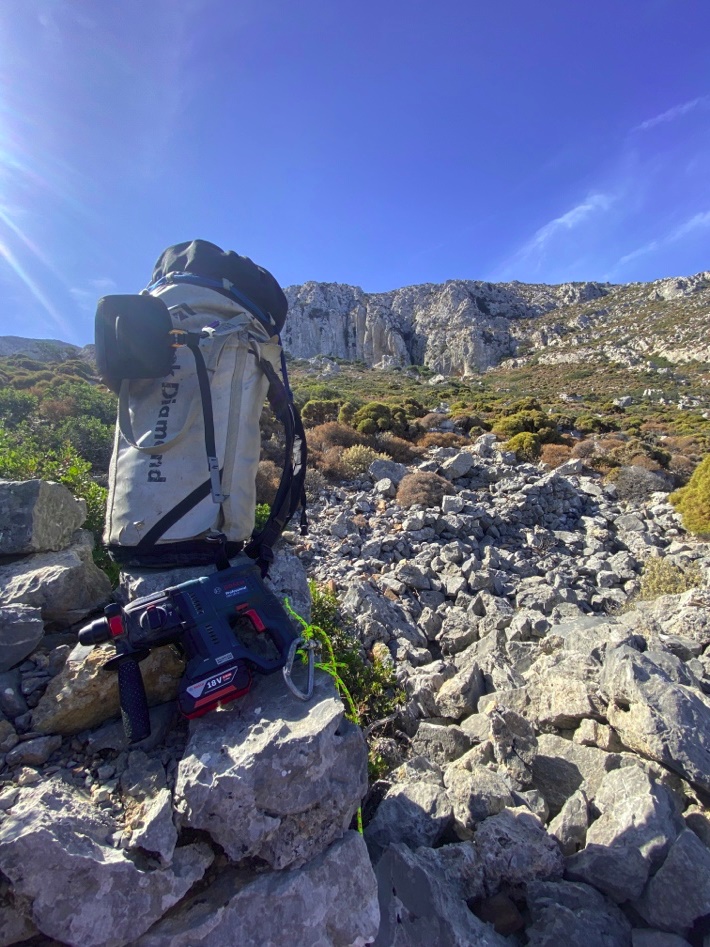
Excess baggage right there!
With hardware unpacked and inspected for use, my final preparations were to put the epoxy adhesive on “ice” and pack the haul bag ready for day one. Not beer in sight!
The first day is the hardest. 250m of static rope, cordless drill, rope access harness, seat, and rigging hardware represents a not-insignificant weight (36 kilos having weighed it to be exact), and this must be carried up to the summit plateau.
The excitement builds on the ferry ride into Irox, my mind wondering about what the wall will be like—will the tufas be as good as they appear to be? Stepping off the boat, the slog begins immediately. Life will be uphill for two hours with a customary stop-off at the chapel, which is the half-way point.
Finally, I am standing on the edge of the South Face, searching for a patch of sound rock into which I can install temporary anchors to rig from. The excitement is palpable as I descend over the edge for the first time, searching out features and assessing where to fix the line away from spikey bushes and loose rock.
Here, the advantages of equipping top down are numerous; not least, it is considerably safer and efficient than ground-up, but with sufficient rigging hardware, a charged drill, and enough rope, it is literally possible to rig a fixed line anywhere on a face. Comfortably suspended in my harness and supported by the Petzl Podium seat, the rope whizzes out of the bag until successive re-anchors bring me closer to the section of wall that has piqued my curiosity all this time.
The wall of tufas, looked at for so many years, is in view, and wow is this going to be fun! The rope continues feeding out of the haul bag as I pass 100m of line out and only just touching down on the large terrace below the wall.
The lower section with ledges and discontinuous sections of slab immediately raises concern as to where the entry pitches should go, so I decide to focus on this last, fixing my line to ease the daily commute up to the higher pitches. In five hours, I have carried 36 kilos of kit from Irox up to the summit and fixed around 230m of rope down the South Face.
With the rope fixed, the daily commute in is made considerably easier: a smaller bag with recharged drill batteries, epoxy, anchors, food, and water. With kit stashed at the base, it’s time for a beer!
The following few days are a familiar cycle of rising early, coffee at Ethereal, then catching the first ferry across to Telendos. A brisk 30-minute hike in, gearing up, then jugging up the line to start drilling, cleaning, and glueing. Progress is going well, until illness strikes and I’m relegated to bed for five days. This has the unfortunate effect of delaying the completion of bolting until after Aris (Theodoropoulos) will have left, not least other climbers who could have been on the first ascents.

Several days spent at the beach yields a few stones upon which I paint the route names. A trip into town acquires the necessary brush, and locals donate the paint. Progress is only interrupted by the local cat who stays guard until the paint dries!
So why THUCYDIDES and PERICLES? Adopting Greek names for new routes is a Kalymnos tradition but very apt for two famous Greek men who were rivals in many ways but shared a heritage together. With both routes sharing the opening pitches but splitting into separate lines of their own, climbing “politics” will no doubt debate which of the two is the better line. Certainly, pitch six on THUCYDIDES is a “trap” before the harder pitch seven, and arguably the tufa-riddled pitch six of PERICLES trumps any pitch.
Finally, my energy returns, and the equipping continues. Now to drill and glue in the anchors for pitches five and six on THUCYDIDES, then de-rig to the top and use the newly installed abseil descent line to relocate everything down to work on the lower pitches.
Having attended to the upper 100m of rock for both routes, the remaining task is to work out the best way through the broken lower 100m of slabs and ledges. It became clear early on that rock in the lower half appears great from the ground, but entirely the opposite when viewed from above looking down.
The intended line is covered with loose blocks and patches of uncharacteristically shattered rock. Instead, I opt for a solid pillar of rock for pitch one but run the second pitch as a rising rightwards traverse to ensure the belayer is never directly below the leader in case anything should ever be broken off.
After removing several massive blocks and flakes, the cleaning is finished, and the remaining bolts can be drilled and glued in for pitches one to three. Cleaning has covered the lower ledges with dust and soil, so I’m fortunate to have the use of a cordless blower, and in two trips everything is blown clean. While arranging the final pull through, I reflect on the past eight days of work, in which 191 glue-in bolts were fixed using over two litres of epoxy adhesive, 36 sets of links and rings placed, and 380 metres of new route established. It’s time to climb!
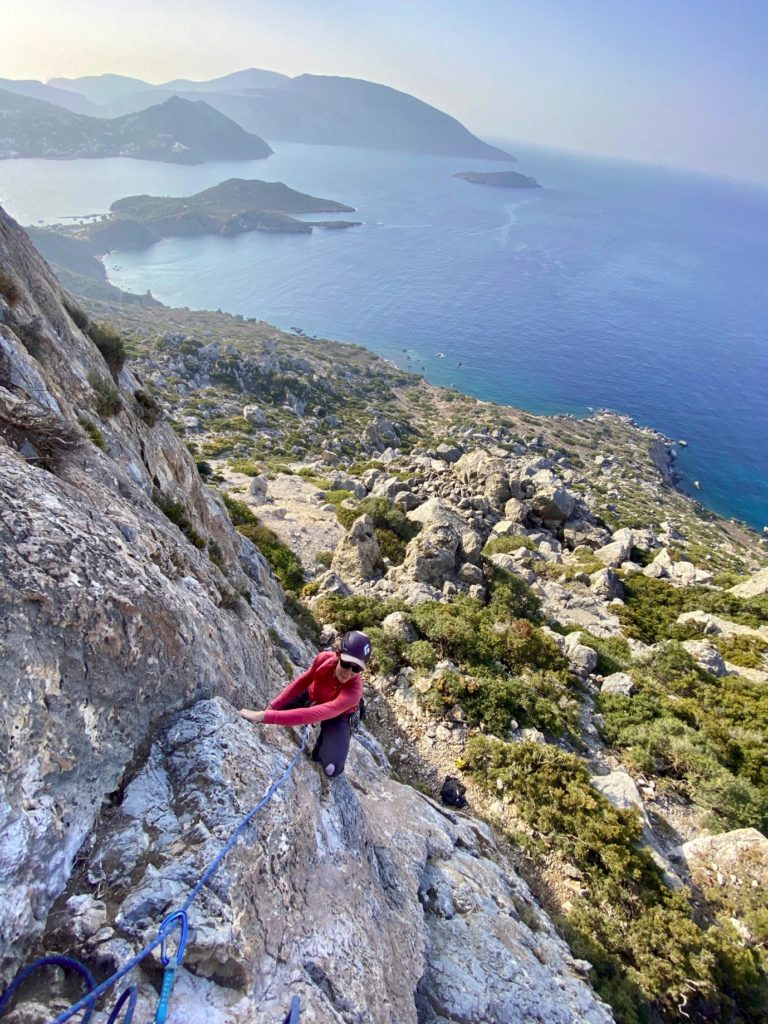
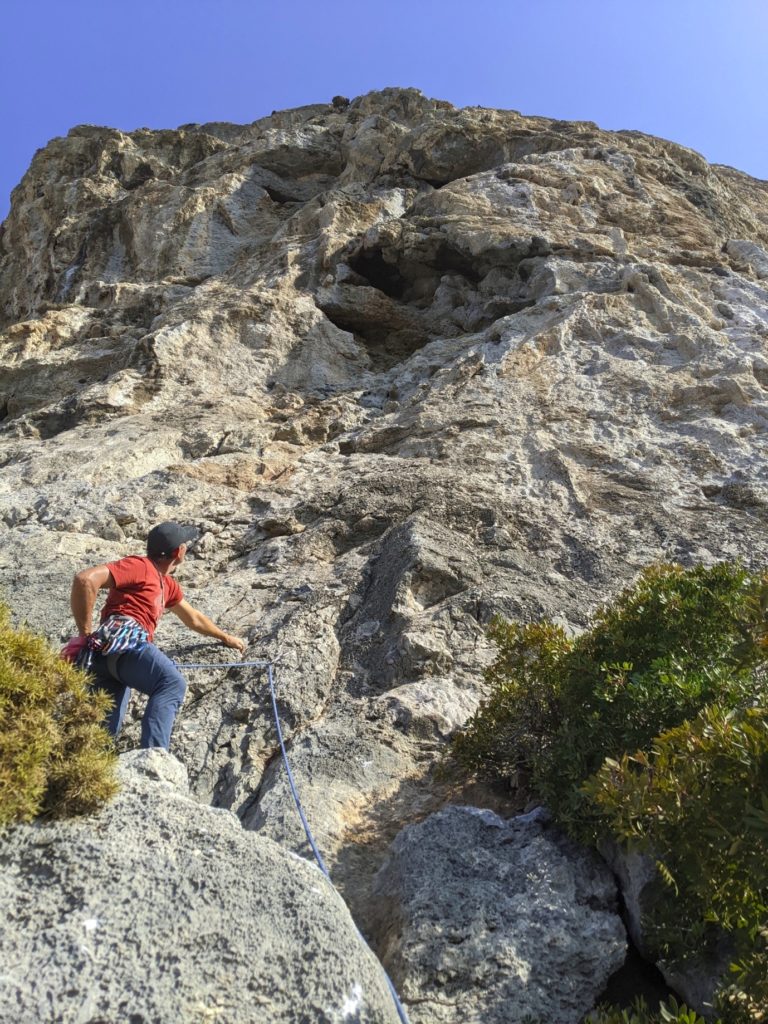
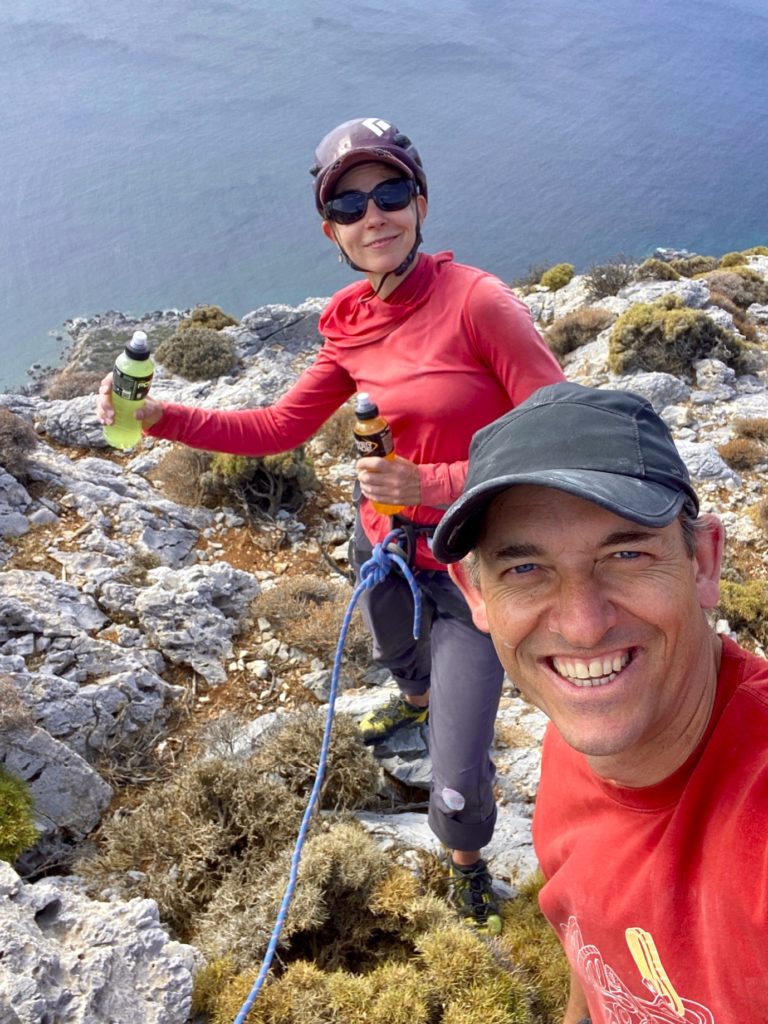
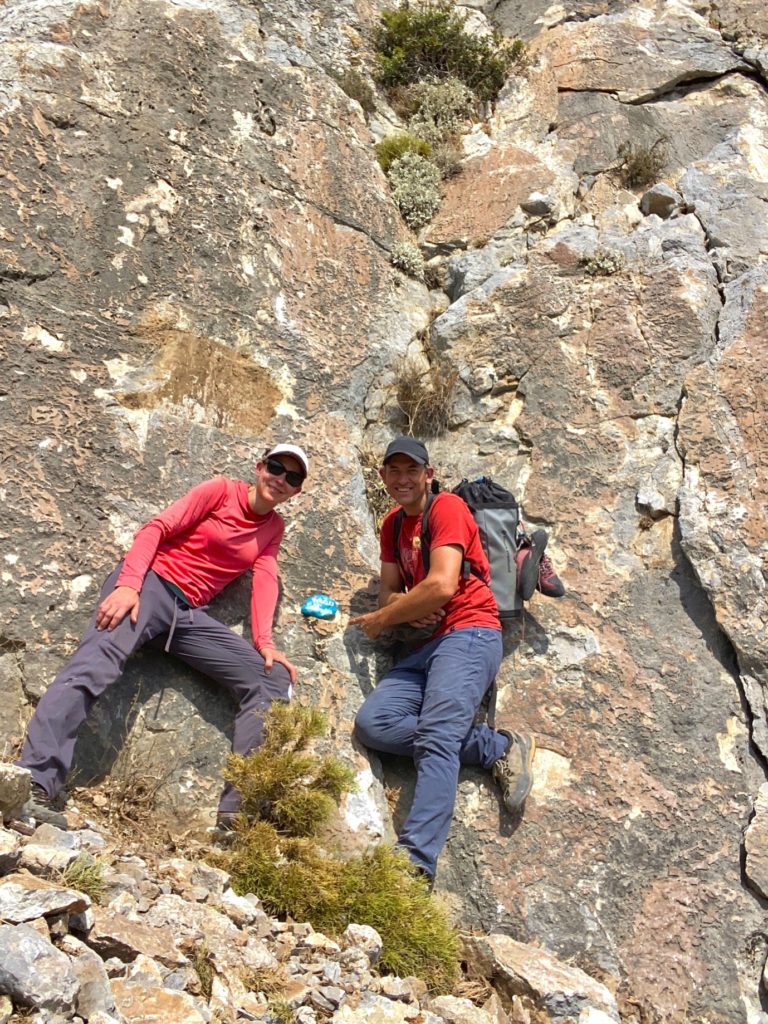
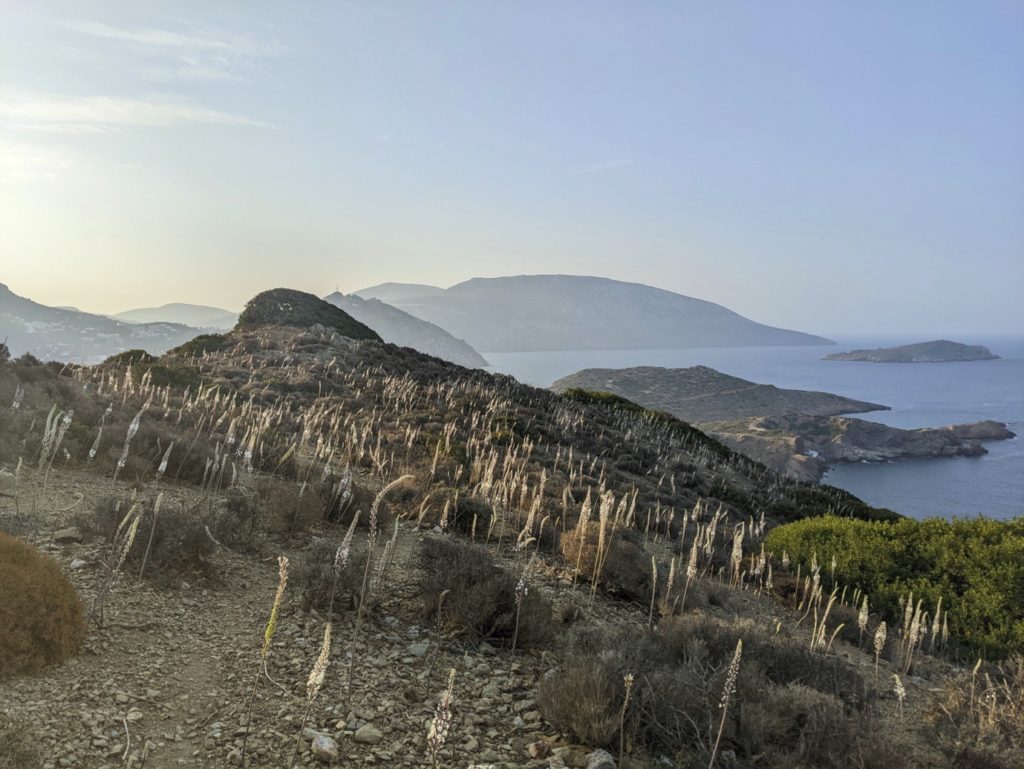
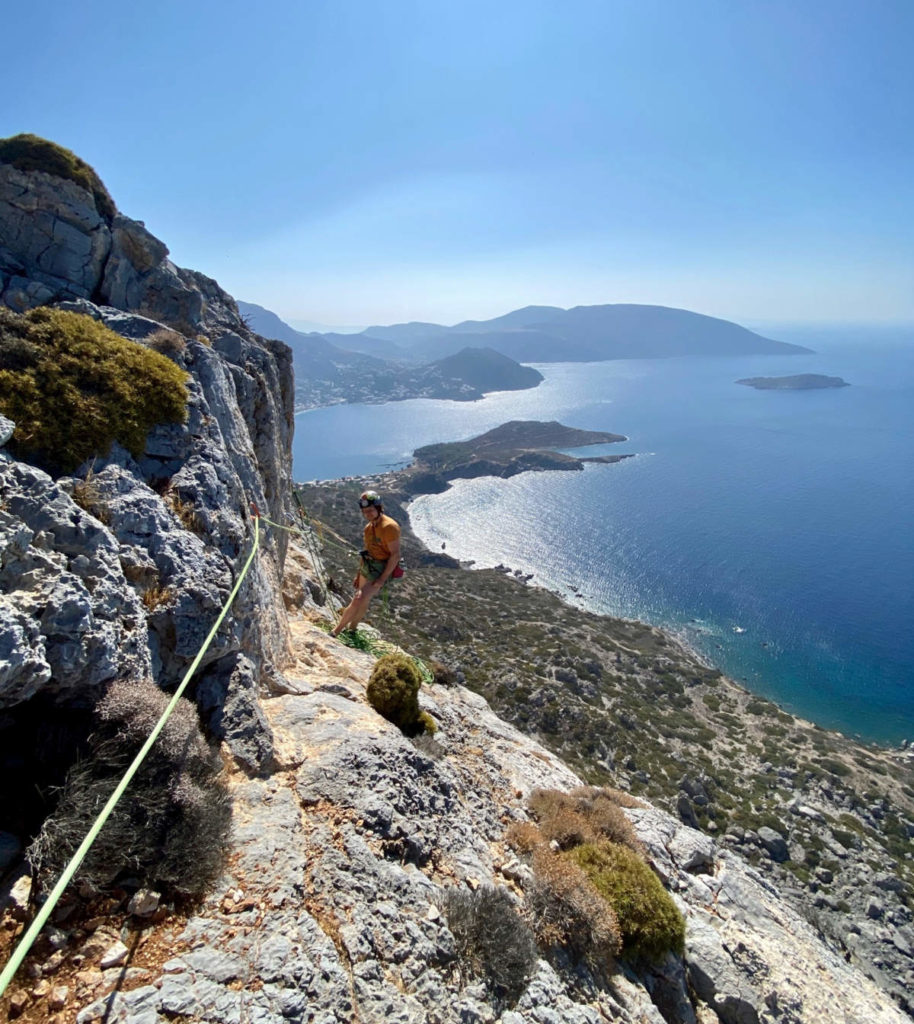
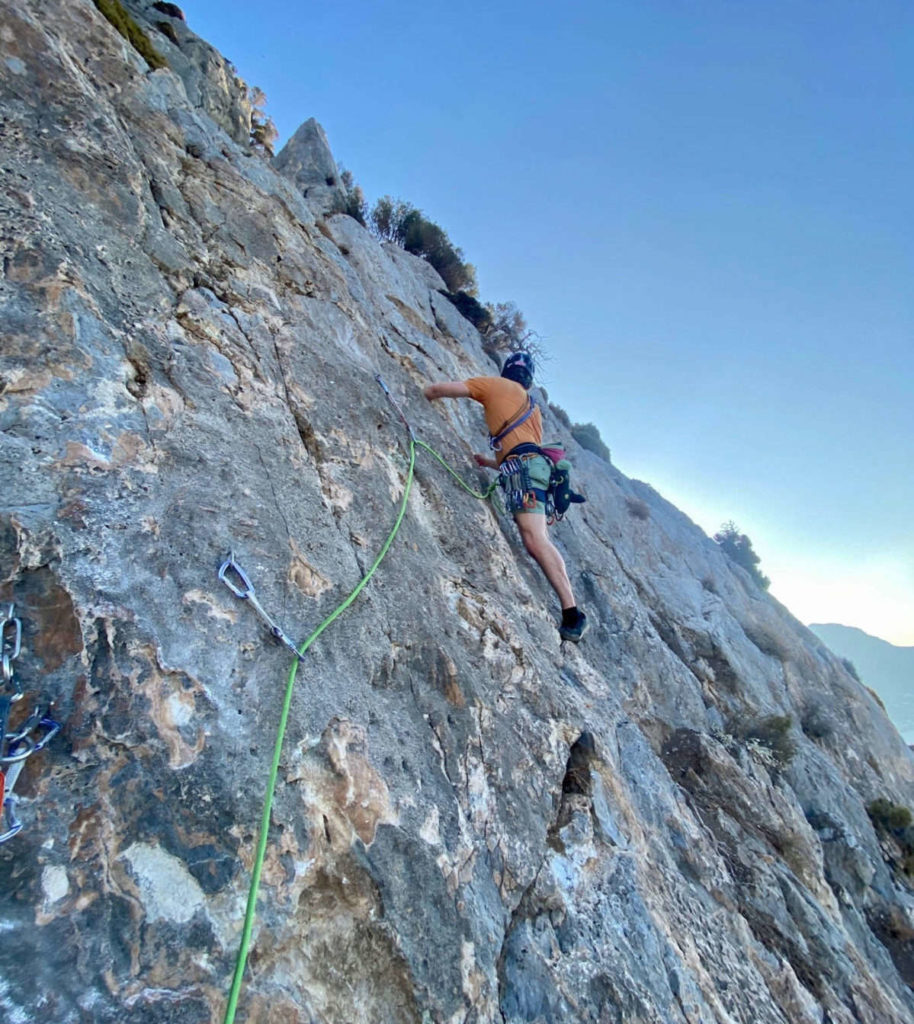
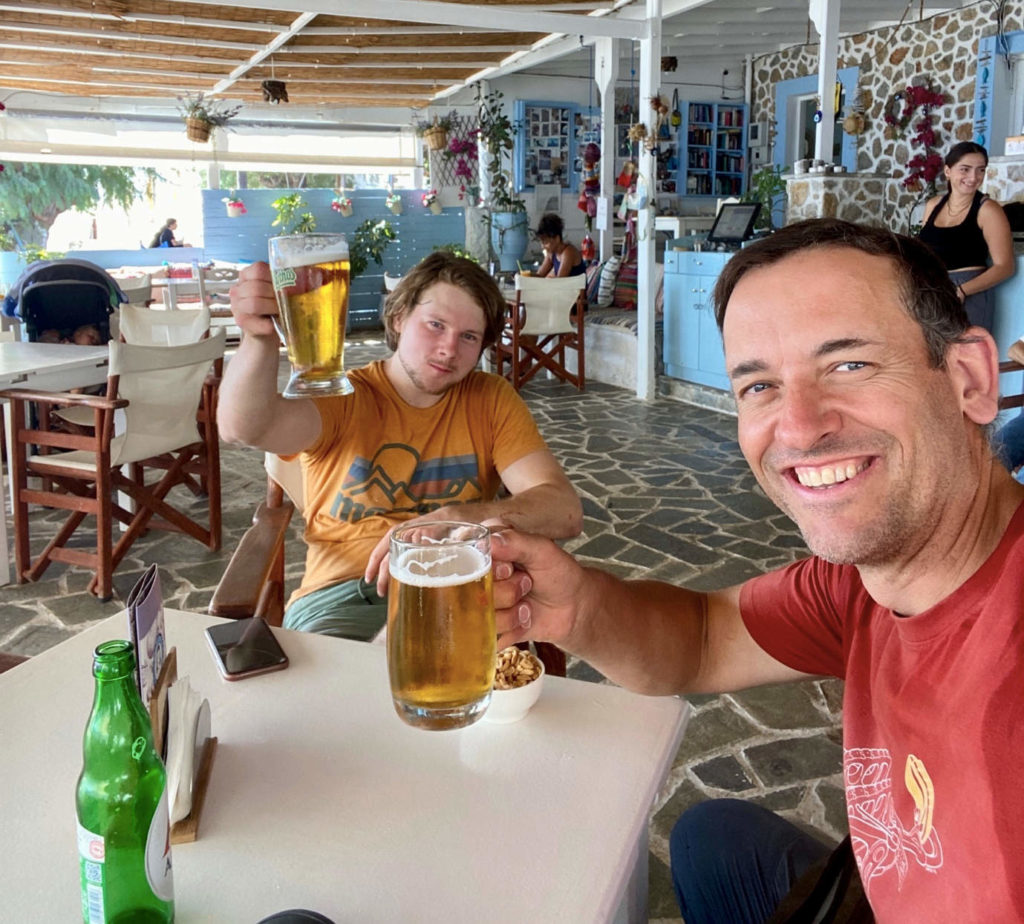
Acknowledgements
All this fun in the sun would not have been possible without formal approval to equip these new routes
according to the Kalymnos New Route Protocol.
I wish to thank:
Aris Theodoropoulos for providing additional static rope, crowbar, and wedge bolts to facilitate safe
rigging.
Mike at Mike’s Bikes for wheels and long conversations about shared quarrying experience!
Ethereal Snack and Coffee for being on station at 6am every morning—the day would never have
started without you.
Giannis for your blower and the paint.
What you leave behind is not what is engraved in stone monuments, but what is woven into the lives of others.
– Pericles
VIEW AND DOWNLOAD TOPO BELOW:



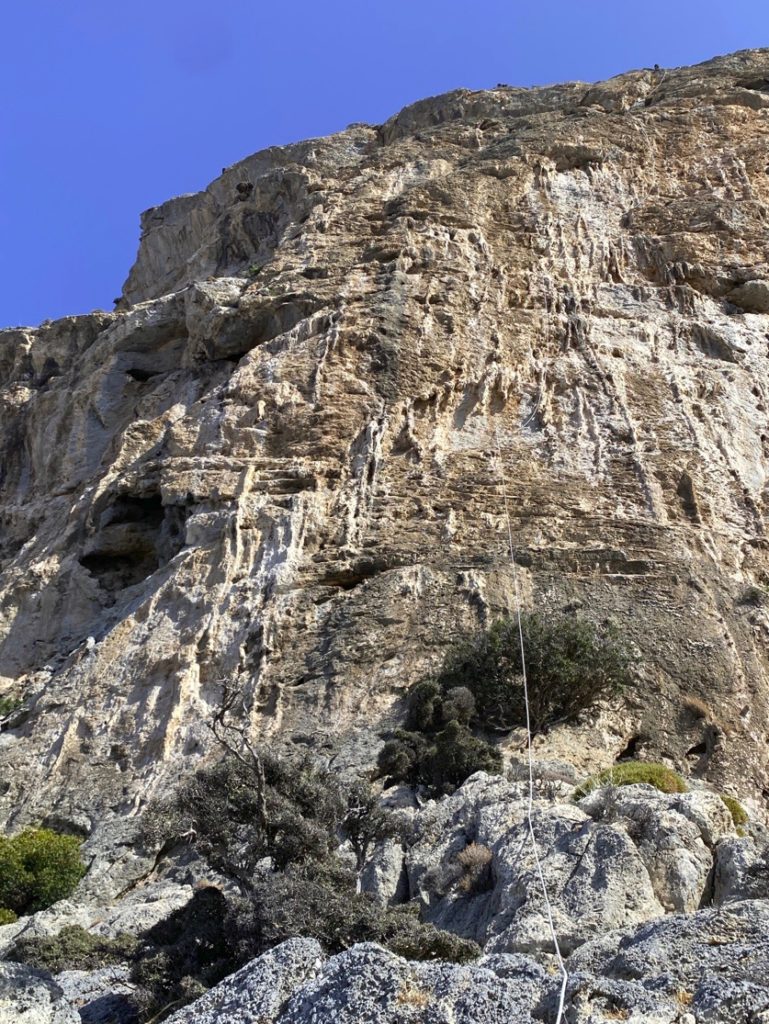


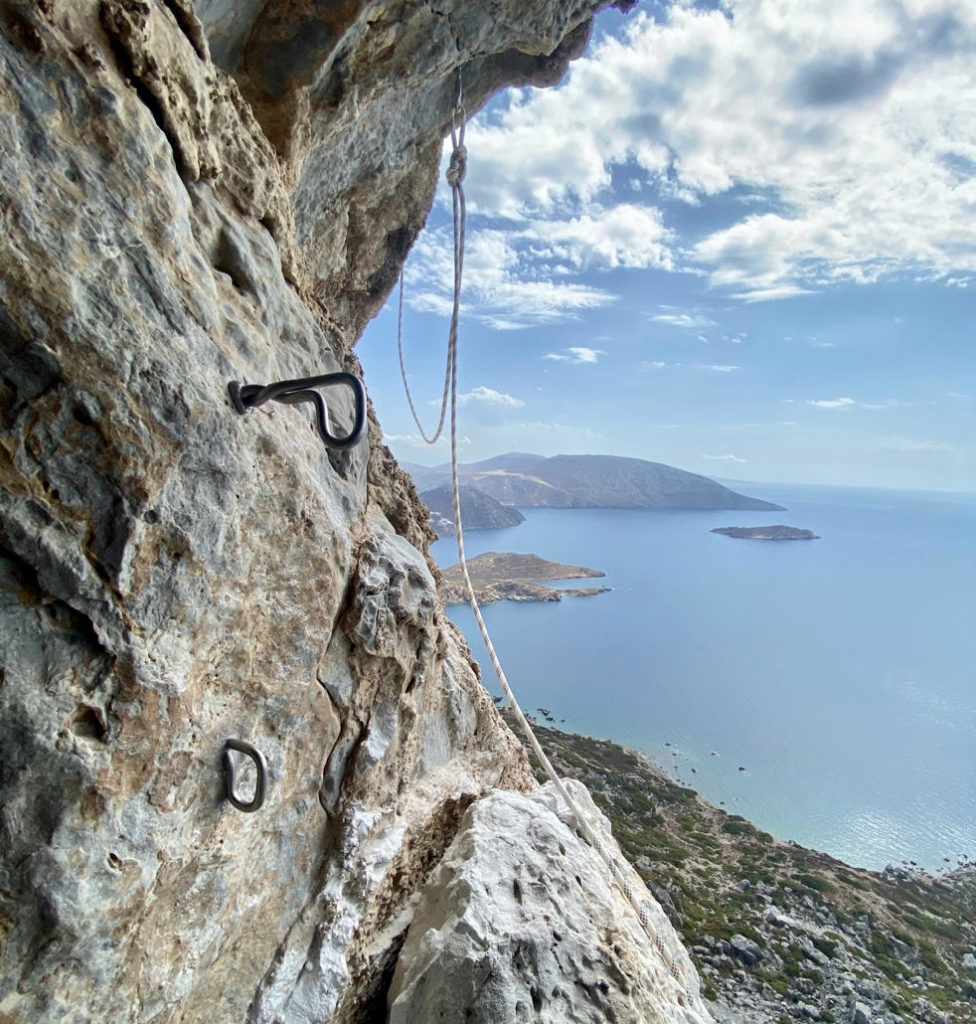
No Comments